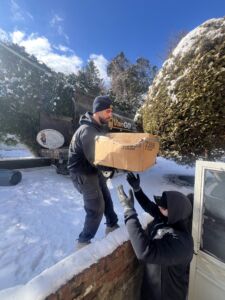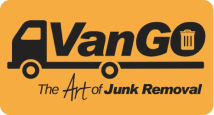When Disaster Strikes
When Disaster Strikes: The Critical Timeline for Flood and Storm Cleanup on Long Island

When hurricane warnings hit Long Island, most residents focus on immediate safety concerns—evacuation routes, emergency supplies, and securing property. But what many don’t realize is that the most crucial decisions often come after the storm passes. As veterans of countless post-disaster cleanups across Nassau and Suffolk counties, the team at VanGo Junk Removal has witnessed firsthand how the hours and days following water damage can make the difference between recovery and total loss. Lets Find out what happens when Disaster Strikes
The Hidden Danger: Why Time Is Your Enemy
When it comes to water damage and storm debris, the clock starts ticking immediately. What many Long Islanders don’t realize is that the timeline for effective remediation is shockingly short:
The 24-48 Hour Window
Water damage becomes exponentially worse after the first 48 hours. Here’s what happens on a timeline most homeowners don’t see until it’s too late:
- Hour 1: Water begins seeping into drywall, flooring, and personal belongings
- Hours 1-24: Materials become saturated; furniture begins to swell
- Hours 24-48: Mold spores activate and begin growing
- Hour 72: Mold becomes visible and begins releasing spores into the air
- Day 5-7: Wood begins rotting; structural damage accelerates; mold colonies become established
- Week 2+: Restoration costs typically double or triple compared to immediate action
“The difference between calling for cleanup on day one versus day five can mean the difference between saving your home and gutting it,” explains Cosmo, co-owner of VanGo Junk Removal. “We’ve seen neighboring houses with identical damage have completely different outcomes based solely on response time.”
Superstorm Sandy: Lessons Learned The Hard Way
Long Islanders need look no further than Superstorm Sandy for evidence of this timeline. In communities from Long Beach to Montauk, homes that underwent immediate debris removal and water remediation often survived with repairable damage, while delayed responses frequently led to complete losses.
In one Freeport neighborhood VanGo serviced after Sandy, two nearly identical Cape Cod homes suffered similar flooding. The first homeowner called for emergency debris removal and water extraction within 24 hours. The second waited one week while dealing with insurance claims. The first home required $30,000 in repairs. The second became uninhabitable and required complete demolition.
The Crucial First Steps After Flooding
Based on VanGo’s decade of experience with Long Island storm cleanup, here’s the critical path most homeowners should follow:
1. Safety Assessment (Immediate)
- Check for structural damage before re-entering
- Turn off electricity at the main breaker
- Watch for wildlife displacement (particularly after coastal storms)
2. Documentation (Hours 0-3)
- Photograph all damage before moving anything
- Record video walking through the property
- Create inventory lists of damaged items
3. Water Extraction (Hours 0-24)
- Remove standing water by any means possible
- Deploy dehumidifiers and fans
- Remove saturated carpet and padding immediately
4. Debris Segregation (Hours 0-48)
This critical step is where professional junk removal becomes essential:
- Damaged items must be sorted by material type
- Hazardous materials must be separated
- Electronics require special handling
- Documentation must be maintained for insurance
“Many homeowners make the critical mistake of creating a single debris pile outside their home,” says Travis, VanGo’s co-owner. “This often leads to insurance complications and can even result in fines from municipalities during large-scale disasters.”
Why Professional Disaster Debris Removal Matters
During our 10 years serving Long Island communities through hurricanes, nor’easters, and flash floods, VanGo has observed that professional junk removal following disasters offers several critical advantages:
1. Speed When It Matters Most
Professional teams can remove water-damaged materials in hours instead of days, often making the difference in preventing mold establishment.
2. Proper Material Handling
Different materials require different disposal methods after water damage:
- Electronics contain hazardous components
- Furniture may be salvageable with proper techniques
- Construction materials often have specific disposal requirements
- Personal items might be recoverable with specialized processes
3. Insurance Documentation
VanGo provides detailed documentation of all removed items, including:
- Categorized inventory lists
- Photographic evidence
- Volume and weight measurements
- Disposal verification
“We’ve had numerous customers tell us that our documentation made the difference in their insurance claims being approved,” Cosmo notes. “That alone can save homeowners thousands.”
Long Island’s Unique Vulnerability
What makes proper disaster cleanup particularly critical on Long Island is our unique geography and climate:
- High Water Table: Many areas experience groundwater infiltration alongside flooding
- Coastal Exposure: Salt water damage accelerates corrosion and decay
- Dense Housing: Cross-contamination between properties is common
- Historic Homes: Older construction materials often require specialized remediation
- Seasonal Extremes: Summer humidity accelerates mold growth after flooding
These factors create what remediation experts call “compound damage scenarios” where multiple types of damage occur simultaneously—making professional intervention even more crucial.
Real Stories, Real Differences: The Jones Family
After a severe nor’easter flooded their Seaford basement with two feet of water, the Jones family called VanGo within hours. Our team:
- Removed all water-damaged furniture, carpeting, and stored items
- Properly segregated materials for insurance documentation
- Identified and saved family photos and documents that could be restored
- Cleared space for dehumidifiers and restoration equipment
- Completed the entire process within 12 hours of water recession
The result? Their basement was fully restored within three weeks with no mold development. Total restoration cost: approximately $15,000.
Their neighbors waited four days before beginning cleanup, facing extensive mold growth that had already penetrated wall cavities. Their restoration took over two months and cost nearly $40,000.
Beyond Residential: Commercial Disaster Response
VanGo’s experience extends to commercial properties across Long Island as well. When a Plainview medical office experienced flooding, our rapid-response team removed water-damaged materials within hours, allowing the practice to reopen within days rather than weeks.
“For businesses, every day closed means lost revenue on top of repair costs,” Travis explains. “Our commercial clients understand that professional debris removal isn’t an expense—it’s an investment in business continuity.”
The VanGo Disaster Response Difference
What separates VanGo from standard junk removal companies in disaster scenarios is our specialized approach:
- 24/7 Emergency Response: Available around the clock during declared emergencies
- Priority Scheduling: Disaster victims receive immediate attention
- Trained Technicians: Our team understands water damage progression
- Insurance Expertise: Detailed documentation for maximum claims support
- Local Knowledge: Deep familiarity with Long Island’s specific challenges
With over 500 five-star reviews and countless disaster response success stories, VanGo has become Long Island’s trusted partner when water damage strikes.
Preparation Is Protection
While we hope your home never experiences significant storm damage, the VanGo team encourages all Long Islanders to:
- Save emergency cleanup contacts before disaster strikes
- Understand your insurance coverage for debris removal
- Create a prioritized list of items to protect or remove first
- Consider preventative measures like elevation of basement storage
“The worst time to figure out your disaster cleanup plan is during a disaster,” Cosmo advises. “The few minutes spent preparing now could save your home later.”
When Minutes Matter, Experience Counts
When water invades your home, you don’t just need junk removal—you need intelligent, strategic debris management from professionals who understand the unique challenges of post-disaster cleanup on Long Island.

